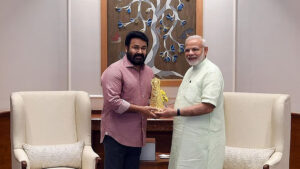In a heartbreaking incident that has stirred outrage across the country, a tigress and her four cubs were found dead in Karnataka, victims of premeditated poisoning in an alleged act of revenge. Authorities have arrested three individuals believed to be behind the gruesome killings—an act that not only extinguished five majestic lives but also sent shockwaves through India’s wildlife conservation community.
The tragedy goes beyond the immediate loss—it exposes the fragile balance between forest life and human hostility, the urgent need for stricter enforcement of wildlife laws, and the rising tension between local communities and protected wildlife in conflict-prone regions.
In this blog, we explore the details of the incident, the wider implications for India’s tiger conservation efforts, and why this case must serve as a turning point in how we protect our most iconic species.
The Crime Unfolded: What Happened?
The incident took place in the scenic yet vulnerable forest ranges of Karnataka, an important habitat for tigers in the Western Ghats. According to forest officials, the carcasses of a tigress and her four cubs were discovered near a water body deep inside the jungle.
Preliminary investigations revealed:
-
The tigress and cubs consumed meat laced with poison, possibly lured by bait.
-
Their bodies were found in close proximity, indicating they died shortly after ingesting the toxic food.
-
Forest trackers noted signs of struggle and frothing, consistent with chemical poisoning.
-
The motive, reportedly, was revenge, stemming from the tigress allegedly preying on livestock owned by local villagers.
Following an intensive probe, three suspects were arrested. It is believed they planned and executed the poisoning out of anger and economic loss—a grim example of escalating human-wildlife conflict.
A Deeply Disturbing Pattern
This is not an isolated incident. In fact, such acts of vengeance against big cats are becoming alarmingly frequent across tiger habitats in India. What makes this case particularly horrific is:
-
The targeted killing of a mother and her cubs, destroying not just one generation but the future of a tiger bloodline.
-
The methodical nature of the crime, involving baiting, poisoning, and covering tracks.
-
The location of the crime, within a protected forest area, showing blatant disregard for conservation laws.
Such crimes represent more than cruelty—they are a direct assault on India’s ecological heritage and conservation success stories.
The Human-Wildlife Conflict Dilemma
At the heart of this tragedy lies a complex and growing problem: the conflict between human settlements and wildlife territories.
Key Challenges:
-
Encroachment and habitat loss: As forests shrink and human activities expand, animals are forced closer to villages, increasing chances of predation and confrontation.
-
Livestock predation: For rural communities, the loss of cattle or goats to tigers or leopards can mean severe economic hardship.
-
Lack of compensation and delayed justice: Government schemes to compensate for wildlife damage are often slow or inadequate, leading to frustration.
-
Poor awareness: Many villagers are unaware of non-lethal deterrents or wildlife-friendly practices.
Unless these issues are addressed holistically, retaliatory killings like this will continue, despite India’s proud status as home to over 70% of the world’s wild tigers.
The Conservation Impact: Setbacks and Signals
The poisoning of one tigress and her four cubs might seem like a singular tragedy, but its ecological ripple effects are immense.
What We Lose:
-
Genetic diversity: Every tigress and her cubs represent a crucial link in maintaining a healthy, resilient tiger population.
-
Conservation progress: Incidents like this can negate years of efforts by forest departments and NGOs.
-
International reputation: As a global leader in tiger conservation, India risks losing credibility when such crimes go unchecked.
-
Local ecosystem balance: The absence of apex predators like tigers can disrupt prey populations and forest ecology.
With tiger numbers already under pressure from poaching, habitat fragmentation, and climate change, every individual life counts.
The Legal Angle: Wildlife Protection Needs More Teeth
India has some of the strongest wildlife protection laws in the world, including the Wildlife Protection Act, 1972, which makes killing a Schedule I animal like a tiger a punishable offence with up to seven years of imprisonment. However, enforcement remains inconsistent.
In this case, the arrests are a step in the right direction, but for justice to truly be served:
-
Speedy prosecution is essential, with no room for loopholes or out-of-court settlements.
-
Stringent penalties must be imposed to deter future crimes.
-
Asset seizure and cancellation of government benefits for convicted individuals could be effective deterrents.
-
Community vigilance groups should be empowered to report suspicious activities.
Wildlife crimes must be treated with the same seriousness as crimes against human life—because the ecosystem itself is under threat.
Turning Tragedy into Reform: The Way Forward
To prevent such tragedies, India needs a multi-pronged approach combining conservation science, legal enforcement, community support, and awareness.
1. Community Engagement
-
Educate villagers about the ecological and economic benefits of tigers.
-
Promote coexistence through workshops and storytelling.
-
Train and deploy local “tiger friends” to act as conservation ambassadors.
2. Livestock Insurance and Rapid Compensation
-
Strengthen compensation programs with faster payouts and minimal bureaucracy.
-
Introduce livestock insurance policies subsidized by conservation funds.
3. Better Forest Surveillance
-
Use camera traps, drones, and real-time alerts to monitor tiger movements near human settlements.
-
Deploy rapid response teams to prevent and mediate conflict situations.
4. Stronger Sentencing
-
Make examples out of perpetrators with quick, public trials and strict sentences.
-
Encourage judicial reforms that treat wildlife crimes as crimes against the nation’s heritage.
A National Mourning: Why We All Should Care
This isn’t just a loss for Karnataka—it’s a loss for India, and for the world. The mother tigress and her cubs were symbols of wild India’s pride and legacy. Their lives, now brutally cut short, serve as a grim reminder of the dangers facing our forests.
Tigers are not just animals—they are guardians of our biodiversity, protectors of our ecological balance, and ambassadors of India’s commitment to conservation.
If we fail to protect them, we fail a promise we made—not just to nature, but to our future generations.
Final Thoughts: Justice for the Silent Victims
As the investigation proceeds and the accused face the legal system, India must reflect on how we reached a point where revenge becomes more accessible than resolution. This case must become a tipping point, prompting reform, education, and empathy.
We owe it to the tigress, to her innocent cubs, and to every endangered species still fighting to survive in the shrinking corners of our wild world.
Let their deaths not be in vain. Let this be the moment we choose protection over revenge, coexistence over conflict, and compassion over cruelty.
Our Services – FACTS Transcripts
We at FACTS Transcripts assist in various services, including:
- Mark Sheet Transcripts
- E-Transcripts
- Duplicate Mark Sheets & Degree Certificates
- Medium of Instructions Certificates
- Attestations
- HRD Attestation / Apostille Services
- ECA (Educational Credentials Assessment)
Trusted by leading global verification organizations, including WES, IQAS, PEBC, NDEB, NASBA, CAPR, NZQA, ICAS, NCESS, ICES, ECE, eduPASS, ACEI, GCEUS, Comparative Education Services, NNAS, NCA, SAQA, QMAS, FORAC, Australian Pharmacy Council, and more.
FACTS Transcripts – The preferred choice for university document verification worldwide. We ensure a hassle-free process for obtaining your transcripts.









